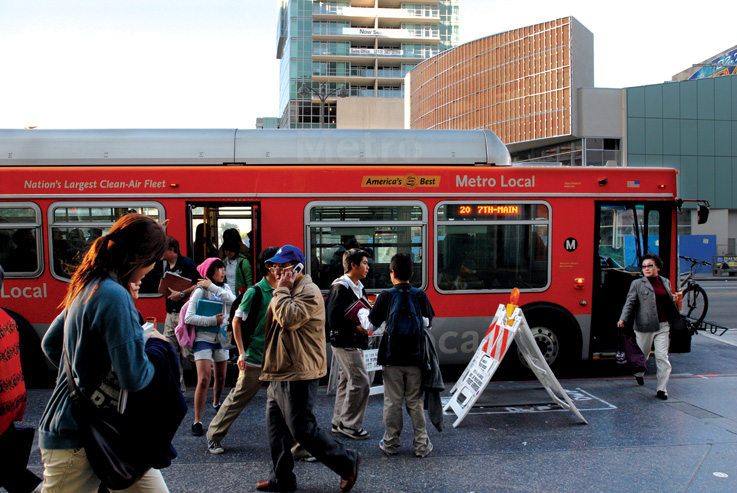Thanks to some innovative data crunching, we already know a large part of Los Angeles Koreatown is not participating in the 2010 census. The silver lining: It’s not too late to come out of the shadows and be counted.
By Julie Ha
In unprecedented fashion this year, the U.S. Census Bureau took pro-active measures to target those hard-to-count minority groups, with in-language ads in the ethnic media, accompanied by partnerships with nonprofit community organizations on the ground. All worked together to connect the dots between getting counted and much-needed government resources flowing into a community. Groups also tried hard to dispel the myth that the census would be used to deport undocumented immigrants.
And yet, as of April 2, about a month after census questionnaires arrived in mailboxes, only 39.5 percent of Los Angeles Koreatown residents, heavily dominated by Latino and Korean immigrants, had returned their 10-question forms. That’s compared to a national average of 67 percent and a Los Angeles County average of 64 percent.
What gives, Koreatown?
KoreAm posed that question to John Kim, director of the Los Angeles-based Healthy City, which generated the alarming data on Koreatown’s response rate in real time. Healthy City, a project of the civil rights-minded Advancement Project, uses innovative technology and research to provide “actionable” information, with the end goal of addressing social inequity.
How is it that Healthy City was able to calculate this low response rate in Koreatown so quickly?
The U.S. Census Bureau has been putting out data on participation rates by census tracts. We have intensive mapping capacities here [at Healthy City]. We can actually draw regions by what we mean by “Koreatown” and do the number crunching. Our analysis looked for low participation and density. Koreatown became a high priority area because it is one of the most intensely populated places on the West Coast, and was identified as the highest-need area [in terms of increasing census participation] in the state of California, given our analysis.
Do we have a sense that it’s both Korean and Latino residents in Koreatown who did not fill out their questionnaires?
Koreatown is about 60 percent Latino and 30 percent Asian Pacific Islander, with a lot of that being Korean. In order to get low counts, we had to see low participation in both communities.
What are the possible explanations for this non-participation?
There are a lot of traditional reasons why immigrant communities don’t participate in general civic engagement processes, but in particular, the census. Even before the census comes out, [people wonder,] “What is the government going to do with the information?” I think people think it negatively affects them.
There was quite an investment by the U.S. Census Bureau, with in-language ads in the ethnic media, plus community nonprofits tried to get the word out in advance of the questionnaires getting mailed out. Was that not effective?
I absolutely think it was effective. We will get stronger participation by immigrants than in 2000 because of it. But I’m talking big picture here. It’s a bigger frame than just getting materials in language or periodic messaging that lasted three to six months. It’s more a matter of: Do immigrants feel ownership in the civic life of their communities and their country?
Is it still possible to capture many of Koreatown’s uncounted?
It is. From now until half of July, the census is still active and alive. [Census workers are now going door to door.] This is the time when traditionally uncounted people have the best chance of being counted. We spend a lot of time preparing information so people can reallocate resources to focus on these high-need areas like Koreatown.
What’s your message to Koreans who have not yet been counted?
The road from census form to true political participation is not that long. Some people think it’s a long, arduous process, but look at the turnaround time from the Latino population being uncounted and being a hidden population, to being one of the most powerful political communities we’ve seen across the country. Those were a couple of census processes—a couple of decades.
Photo by Eric Sueyoshi






